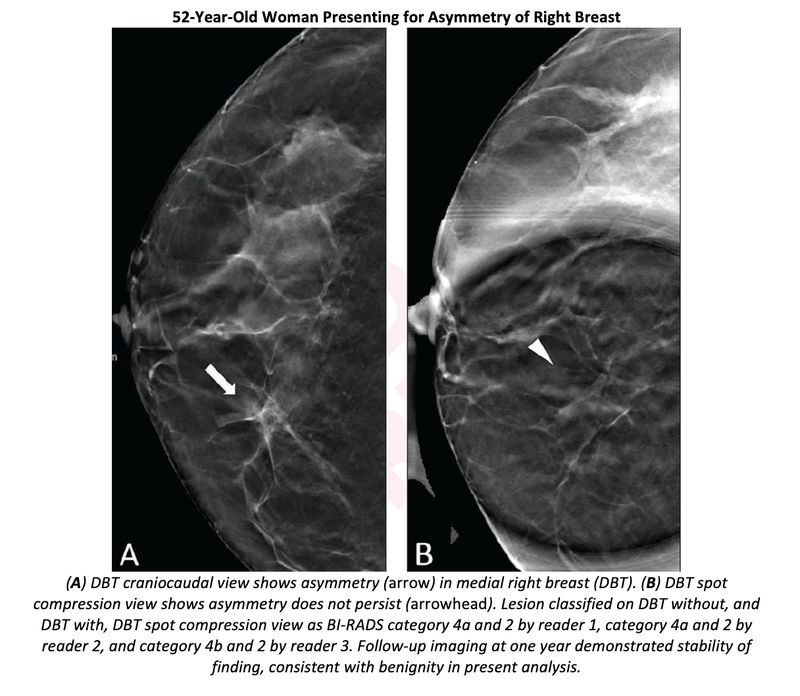DBT Spot Compression View Clarifies Equivocal Findings
 A new study reports using digital breast tomosynthesis spot compression view helps characterize equivocal DBT findings, further reducing workup for benign findings.
A new study reports using digital breast tomosynthesis spot compression view helps characterize equivocal DBT findings, further reducing workup for benign findings.
Published in the American Journal of Roentgenology (AJR), the retrospective study included 102 women (mean age, 60 years) for whom a DBT spot compression was acquired to characterize an equivocal finding on DBT (via the performing radiologist’s discretion) from December 14, 2018 to December 18, 2019. Conscious of the equivocal lesions’ location, two fellowship-trained breast radiologists and one breast imaging fellow independently reviewed all examinations—assigning an initial BI-RADS category using standard DBT views, immediately followed by a category using DBT spot compression.
Noting that DBT spot compression increased both intrareader and interreader agreement and improved diagnostic accuracy, primarily from improved specificity, “the view’s supplemental dose was slightly higher than that of a standard DBT view,” corresponding author Dr. Foucauld Chamming from the Institut Bergonié in Bordeaux, France acknowledged.
Based on kappa coefficients for DBT with and without spot compression views, intrareader agreement increased from 0.43 to 0.72, and interreader agreement increased from 0.21 to 0.45. Additionally, for all three readers, DBT spot compression views yielded significantly increased accuracy, as well as significantly increased specificity.
Adding that their study is the first to evaluate the impact of obtaining DBT spot compression for equivocal findings on DBT, “the results support the utility of spot compression views for aiding evaluation of subtle or ambiguous findings encountered on DBT in clinical practice,” the authors concluded.